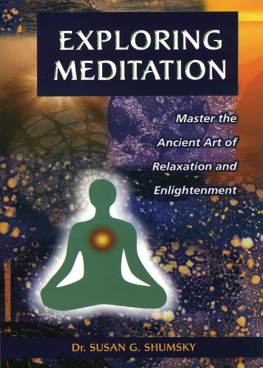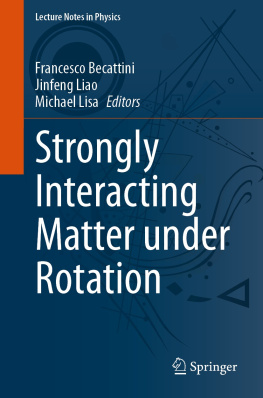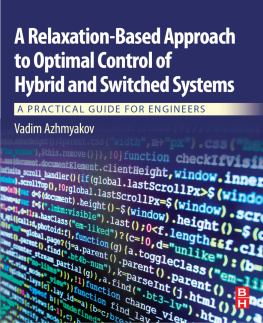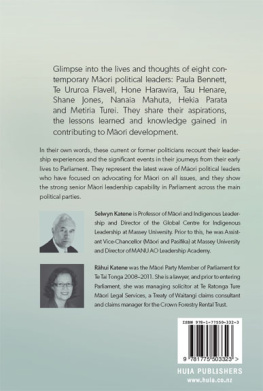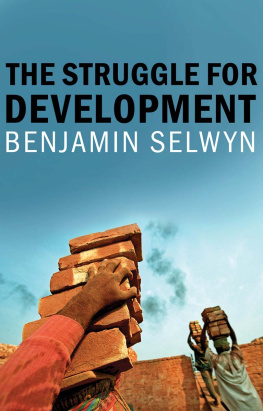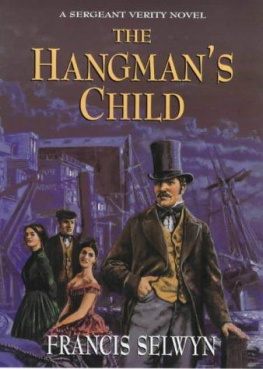Lyndsie Susan Selwyn - Nuclear Magnetic Relaxation in Arbitrary Spin Systems.
Here you can read online Lyndsie Susan Selwyn - Nuclear Magnetic Relaxation in Arbitrary Spin Systems. full text of the book (entire story) in english for free. Download pdf and epub, get meaning, cover and reviews about this ebook. year: 1979, genre: Religion. Description of the work, (preface) as well as reviews are available. Best literature library LitArk.com created for fans of good reading and offers a wide selection of genres:
Romance novel
Science fiction
Adventure
Detective
Science
History
Home and family
Prose
Art
Politics
Computer
Non-fiction
Religion
Business
Children
Humor
Choose a favorite category and find really read worthwhile books. Enjoy immersion in the world of imagination, feel the emotions of the characters or learn something new for yourself, make an fascinating discovery.
- Book:Nuclear Magnetic Relaxation in Arbitrary Spin Systems.
- Author:
- Genre:
- Year:1979
- Rating:4 / 5
- Favourites:Add to favourites
- Your mark:
- 80
- 1
- 2
- 3
- 4
- 5
Nuclear Magnetic Relaxation in Arbitrary Spin Systems.: summary, description and annotation
We offer to read an annotation, description, summary or preface (depends on what the author of the book "Nuclear Magnetic Relaxation in Arbitrary Spin Systems." wrote himself). If you haven't found the necessary information about the book — write in the comments, we will try to find it.
Nuclear Magnetic Relaxation in Arbitrary Spin Systems. — read online for free the complete book (whole text) full work
Below is the text of the book, divided by pages. System saving the place of the last page read, allows you to conveniently read the book "Nuclear Magnetic Relaxation in Arbitrary Spin Systems." online for free, without having to search again every time where you left off. Put a bookmark, and you can go to the page where you finished reading at any time.
Font size:
Interval:
Bookmark:
Douglas Copland believed that he had a special perspective on Australian and world affairs because he was a New Zealander. As his career expanded and his work took him to live in Hobart, Melbourne, Canberra, London, New York, Nanking, Ottawa and Geneva, it might seem inevitable that New Zealand would seem increasingly remote. It was not so. When he left New Zealand for the first time as a young man of twenty-three his practical view of the world had been formed, his moral values crystallised and his intellectual mindset largely acquired. Throughout his life he preserved strong ties with his family, with his early friends in New Zealand and with New Zealand academic colleagues, public officials, politicians and expatriates. He claimed that his New Zealand background kept his feet on the solid earth.
Douglas Copland was born at home at Otaio, in the Esk Valley of the South Island of New Zealand, on 24 February 1894. As the thirteenth child of Alexander and Annie Copland, his arrival did little to alter the rhythm of the familys ways. It was summertime, the busy time of shearing and of wheat harvesting, and in that household the birth of a child was a common occurrence. It was also a time of economic depression in New Zealand and in the wider world. Prices of agricultural products were falling, and had not yet bottomed; expansionary public works in New Zealand had been discontinued, and unemployment was rising. Although anxiety was widespread, the Coplands were in a good position to weather the depression and to take advantage of improving conditions after 1896. Alexander had always been ready to seize opportunities as they occurred, and Douglas was born into a financially secure family.
From his parents he was to inherit a pioneering spirit and to learn the habit and the pleasure of hard physical work. In 1894 his father Alexander was fifty-three, an experienced farmer who had been in New Zealand for almost thirty years. He and his brother James had been born in Scotland, near Balmoral, the twin sons of Jane Robertson, whose parents were tenant farmers. He had not known his father, Alexander Copland, who had been a tenant of Lord Samphill of Craigevar, but was killed by the kick of a horse before the boys were born. The twins were brought up by their mother and their stepfather, Richard Davie, at Lumphanon on the Dee, as part of a large and fairly comfortable small farming family. They worked from childhood and were encouraged to become independent, responsible and skilled agricultural labourers, particularly skilled ploughmen. At night they learned to read and write at classes conducted by a retired schoolmaster. In view of the long stagnation of the Scottish economy, however, as they grew older the boys saw little opportunity for advancement in Scotland. The country was considered to be overpopulated and, like many Scots, they turned their thoughts towards emigration.
In the early 1860s South Canterbury in New Zealand was considered a highly suitable destination for those of a pioneering spirit. In 1864 Alexander Copland, then aged twenty-three, left Aberdeen on the Tudor and disembarked at Lyttelton, the port of Christchurch. He had no difficulty in finding work, for there was a shortage of labour in the colony. Land was being cleared, wheat and wool had to be carted from the backcountry, and the New Zealand Government was pushing ahead with railway construction. Having decided to work on large estates, within five years Alexander was working for the Canterbury and Otago Association, a land and pastoral company with great holdings in those two provinces. He had moved to Pareora, the associations estate in South Canterbury, bordered by the Esk Valley. Pareora was to become an exciting development project where the managers of the Canterbury and Otago Association were experimenting in breeding the sheep that were to become the Corriedales. Here the association decided to break thousands of acres a year out of the tough, brown tussocks, to clear and reclaim the flax- and scrub-covered swamplands, preparing to plant the land with English grasses. They also decided to develop wheat-growing. During the 1870s South Canterbury became the granary of the colony, with a substantial part of Pareoras 42 000 acres contributing to the burgeoning wheat boom. Such was the fame of the estate that, despite a general shortage of labour, the sons of farmers and pastoralists paid to become cadet trainees there.
At Pareora Alexander became accustomed to learning new methods of production, and by the end of the 1870s he was driving eight- and ten-horse teams to power ploughs of various types and innovative machinery. He also began to trade in land. Beginning with swampland, he bought 200400 acre blocks of land for improvement and sale. Then, in the true tradition of pioneer farmers everywhere, he bought good land; cleared, fenced and cropped it, making it ready for new settlers. These blocks were sometimes within the area of the pastoral runs, both in neighbouring Otaio and on the Pareora estate. On two occasions he bought the freehold in conjunction with wealthy pastoralists and supplied the labour. Then, in 1878, he seized the opportunity to buy for his own use a well-developed farm when the leaseholder of Blue Cliffs, a large station that had been carved out of Pareora, was bankrupted by the failure of the Glasgow City Bank. Two years later he bought a second farm, Brookfield, which then became the home farm, as well as a third farm some four miles up from Otaio, thus extending his property holdings to 2000 acres. He farmed these properties intensively, the core production being the harvesting of 600 acres of crop and the shearing of some 2000 sheep, mostly Corriedales. Alexander was an intelligent farmer, varying his output between wool, meat (sheep and cattle), wheat, dairy products, poultry and bee products, according to market signals. He also established a very successful Clydesdale stud, exporting horses to Victoria and particularly to the Carlton Brewery in Melbourne.
In 1878 Alexander had felt sufficiently established to get married. Those were days when marriages most often took place between neighbours. Alexander, then thirty-seven, married 21-year-old Annie Morton Loudon, the stepdaughter of a neighbouring freeholder living on the edge of the Pareora estate. Annie was used to coping with pioneer life. She had been born in the Loudon Valley of New Lanarkshire and Ayrshire, the fifth child of John and Janet Loudon. When she was still a small child her father had gone to the United States to seek opportunities for the family to emigrate, but they never heard of him again and presumed he was dead. Janet then married a widower, James Agnew, and, when Annie was seven, the couple, with the five Loudon children and two Agnew children, left Glasgow on the British Empire , bound for New Zealand. They settled in the Esk Valley, where they were already established when Alexander Copland arrived.
Annie was a big, strong woman, possessed of great fortitude and ever ready to carry her share in the burden of work. It was a quality that she passed on to her children. James, the first Copland child, was born in 1879 and was followed at not much more than annual intervals by Jessie, Jane, John, Alexander, Annie, William, Helen, Arthur, Margaret, Andrew, George (who died at six weeks), Douglas and Robert. After Roberts birth in 1895 there was a gap until the birth of twins, Marjorie and May, in 1900. That completed the Copland family. It formed a small community within itself, often swelled by workmen at shearing and harvesting times and by many cousins from both sides of the family. (Alexander Coplands twin brother James had also come to New Zealand, married, settled at nearby Chertsey and become the father of twelve children.) Douglass most vivid memory of his mother was her serenity in the face of all the problems of a large family and a still larger community of workmen and family on the farm. She was generous in extending the hospitality of the house to neighbours and to workmen and their families. Hard work on the properties was punctuated by social activities at the home farm of Brookfieldregular Friday night dances in the woolshed, community singing around the piano after church, and social activities to raise money for the school. The local tennis club was based at the tennis court on the Copland property. In childhood Douglas developed a strong need, which never left him, for warm and congenial companionship at work and for convivial relaxation at the end of the day. Without it he felt emotionally starved and his work became less effective.
Font size:
Interval:
Bookmark:
Similar books «Nuclear Magnetic Relaxation in Arbitrary Spin Systems.»
Look at similar books to Nuclear Magnetic Relaxation in Arbitrary Spin Systems.. We have selected literature similar in name and meaning in the hope of providing readers with more options to find new, interesting, not yet read works.
Discussion, reviews of the book Nuclear Magnetic Relaxation in Arbitrary Spin Systems. and just readers' own opinions. Leave your comments, write what you think about the work, its meaning or the main characters. Specify what exactly you liked and what you didn't like, and why you think so.



